Bengal alpona, "Poush Sankranti at Sumitra’s home" — part 4
Drawings on the walls include agricultural tools, kitchen utensils, lotuses, fish, birds, abstract human figures, divine feet, mangoes, betel leaves, a palanquin, a pot of vermilion, arm ornaments and circular granaries.
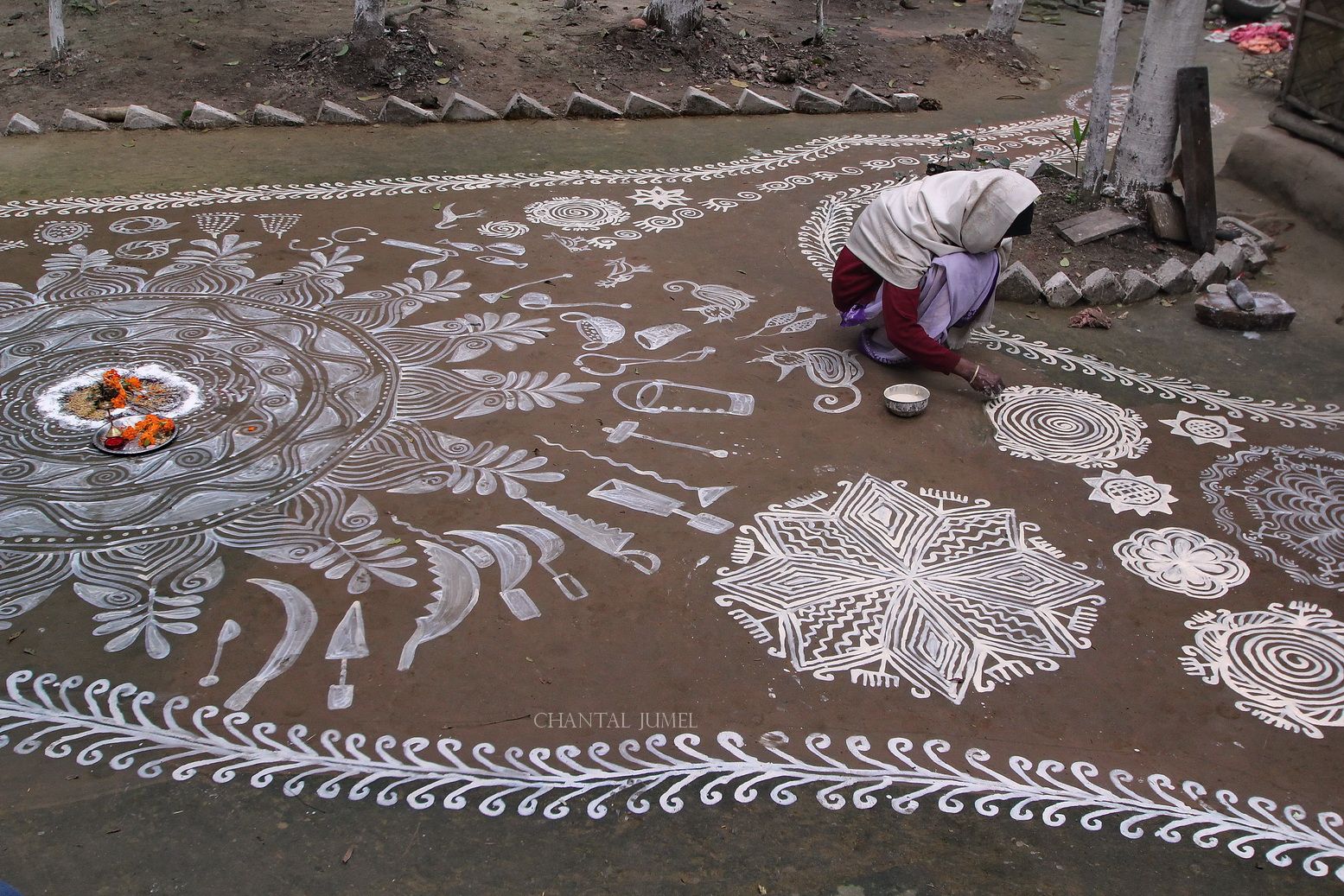
Moved by the graceful and invocative gestures, I think back to the first images of Jean Renoir's film "The River" and understand why the filmmaker had chosen to start the film with images of the creation of an alpona as a homage to the memory of his father, the painter Auguste Renoir. Sumitra has finished her work and disappears into the house. I take this opportunity to admire the walls and the front door. Like the pages of a school notebook filled with enigmatic symbols, the reddish ochre walls, enhanced with drawings and symbols, are a summary of the beliefs and magic-religious customs from the rural world of Bengal. These open-air graphic compositions remind me of the illustrations in the one and only book in French on this art, entitled "L'Alpona ou les décorations rituelles au Bengale" by Abanindranath Tagore and published in Paris in 1921. The latter was a painter, illustrator, and a writer. Born in 1871 in the family of the philosopher Rabindranath Tagore, he founded the Indian Society of Oriental Art to promote traditional Indian arts.
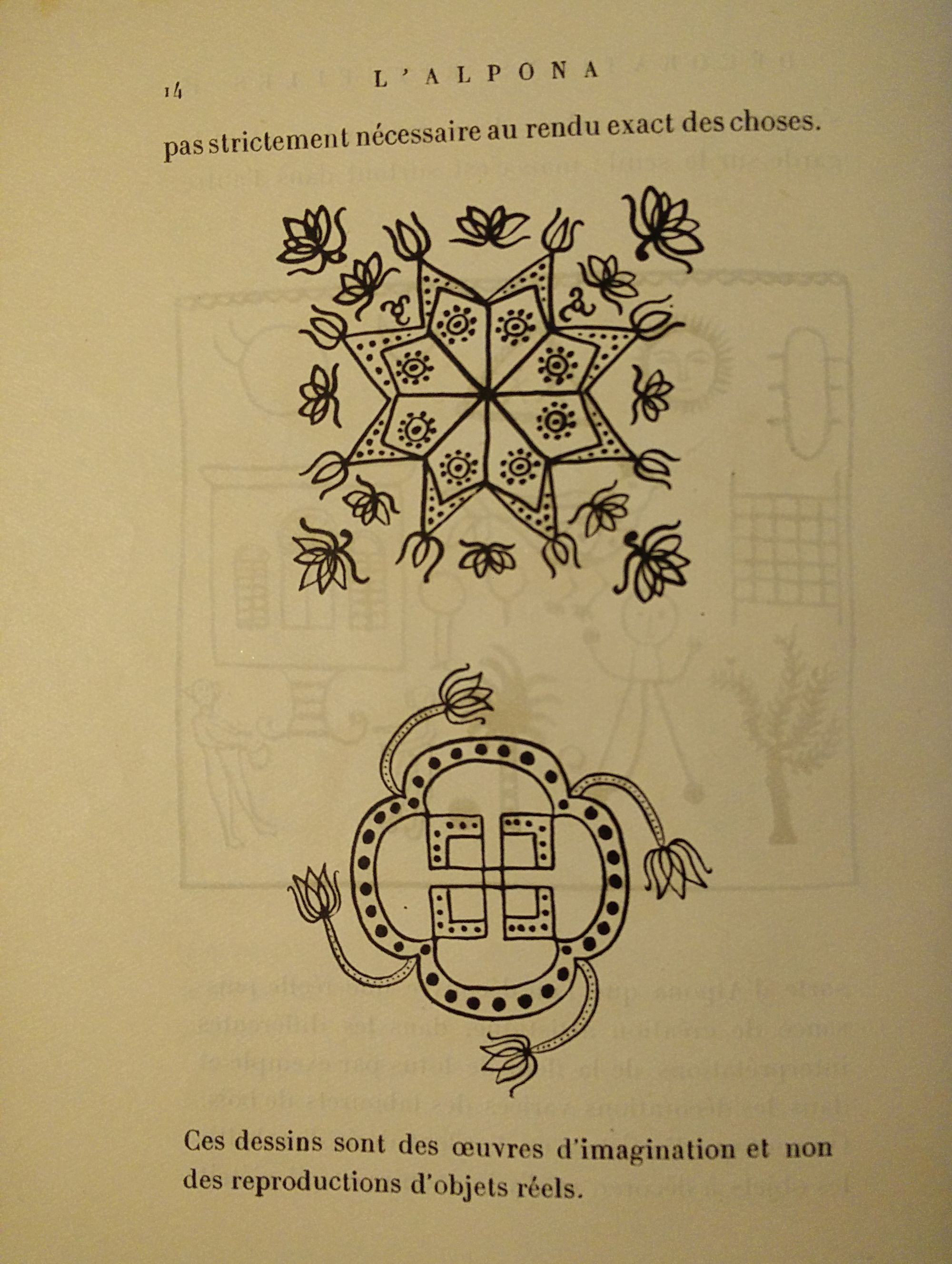
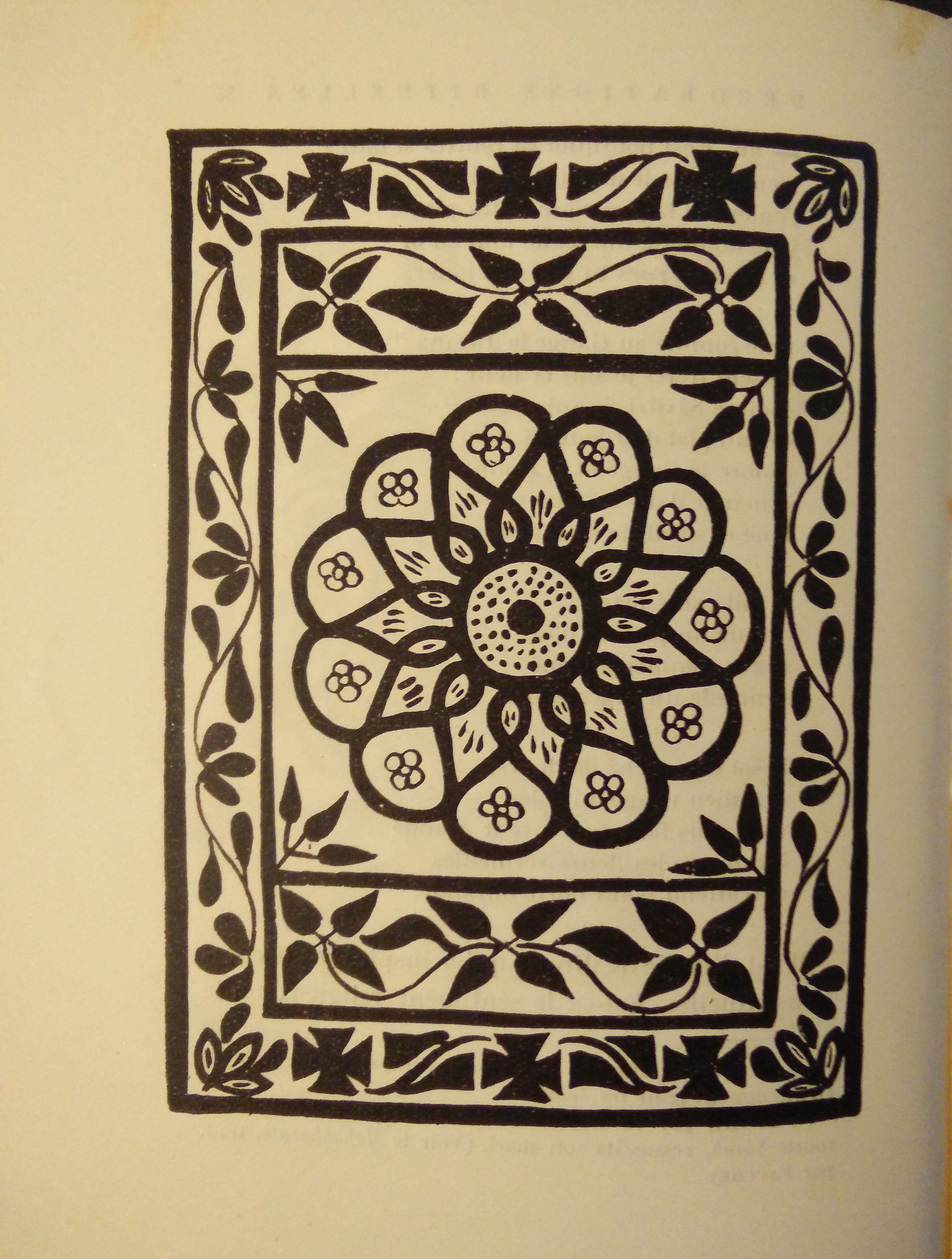
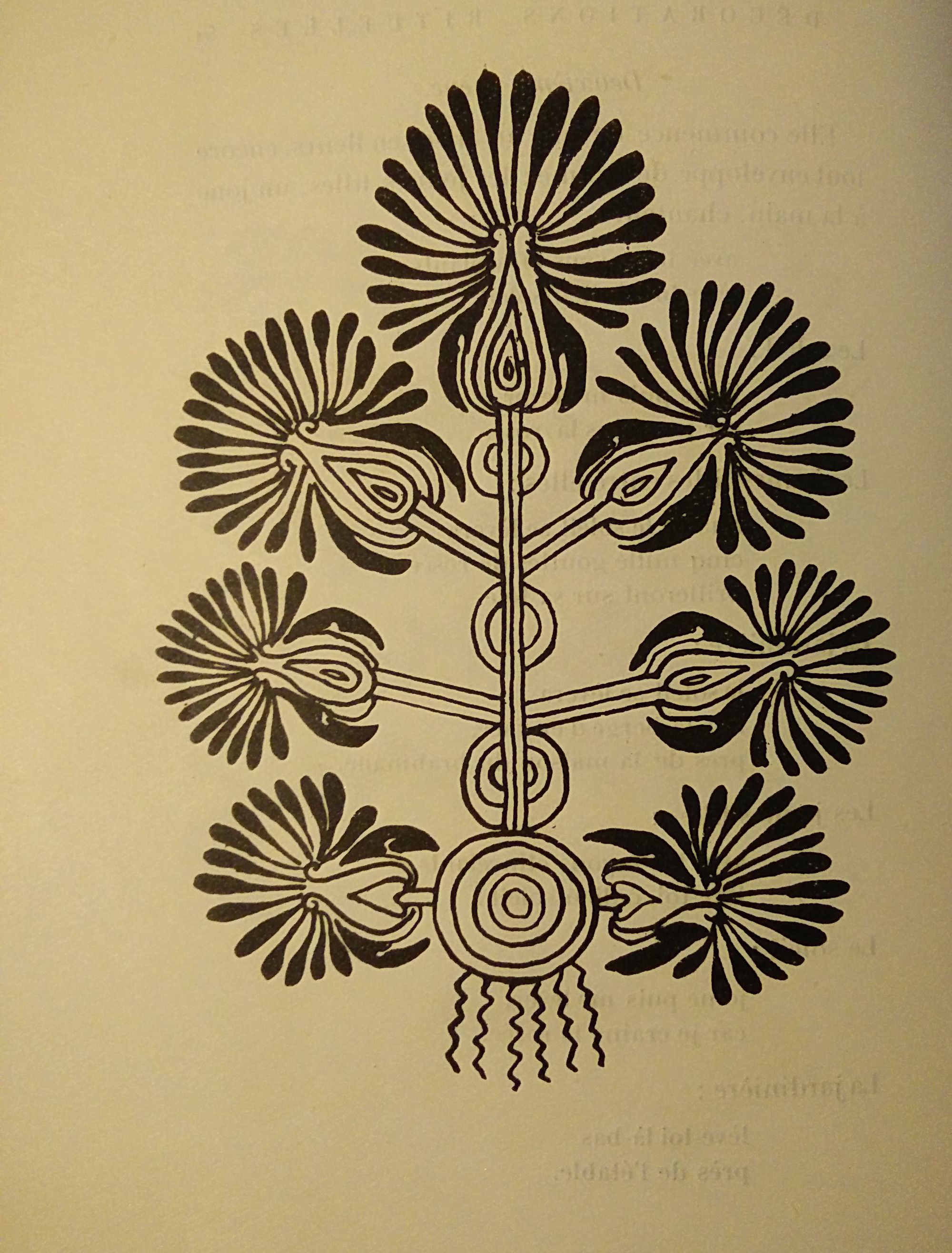
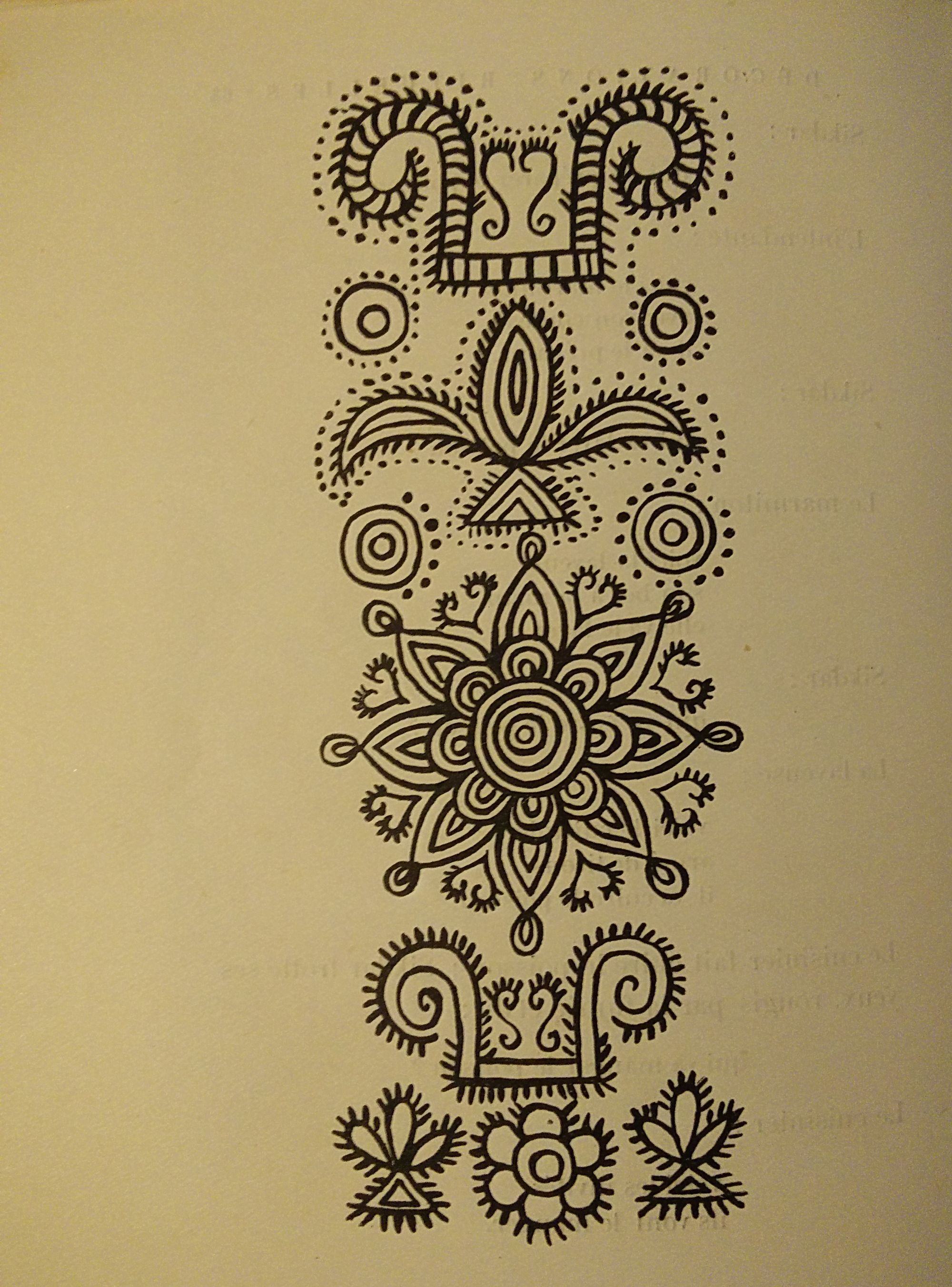
I also find on the walls the same drawings from the book that made a great impression on me years ago. Today it is Rabi's turn to describe the meaning of the motifs. There are, of course, agricultural tools, kitchen utensils, lotuses, fish, birds, abstract human figures, divine feet, bori on a grid (dried lentil dumplings popular in Bengali cuisine), mangoes, betel leaves, a palanquin, a pot of vermilion, arm ornaments and circular granaries (gola) built with bamboo slats.
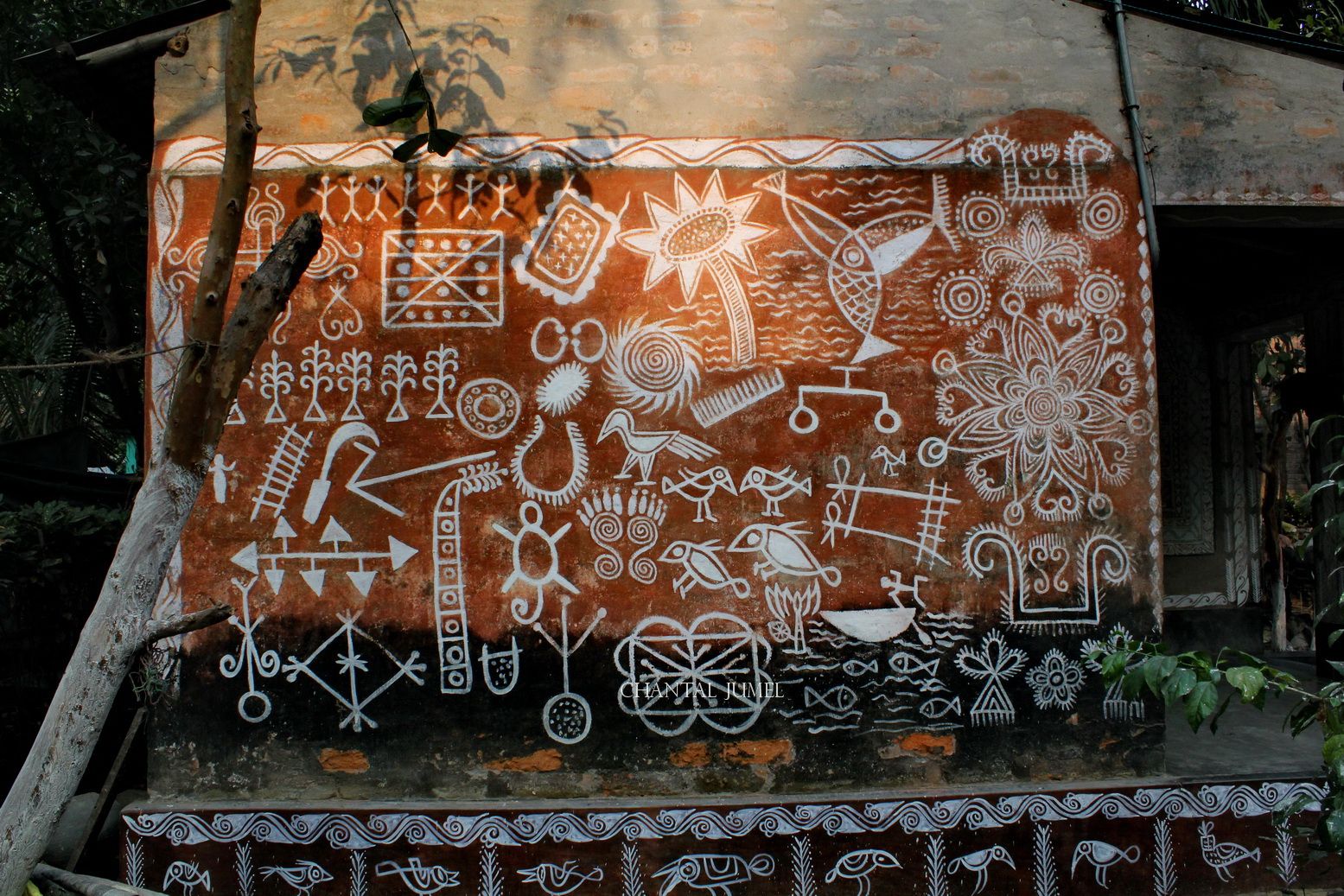
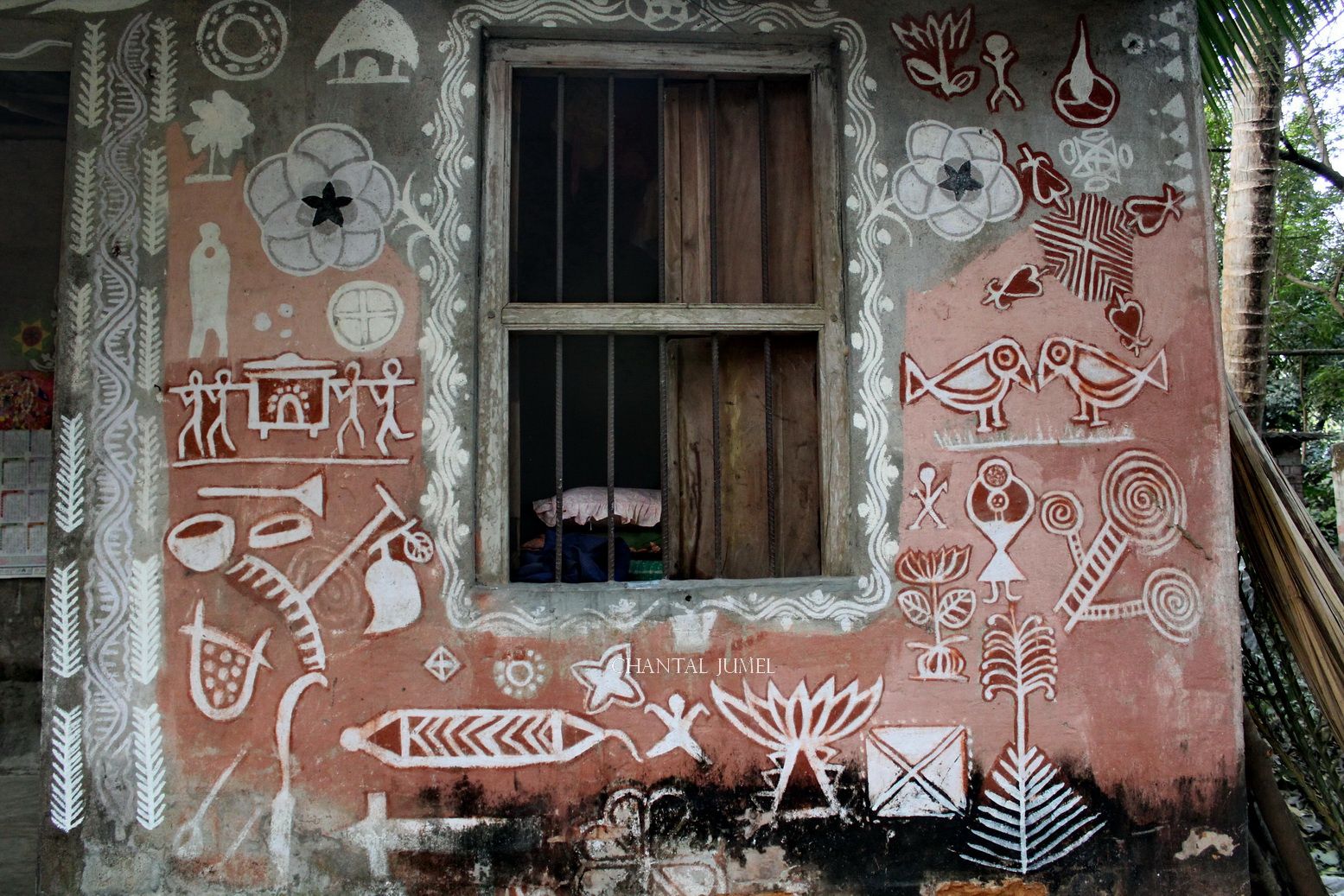
Friezes adorn the supporting columns of the veranda, while a stylised conch vine runs across the upper frame of the porch. As I climb the few steps, I notice two owls painted on each side of the double entrance doors, facing each other. In Bengal, this nocturnal bird is the vehicle of Goddess Lakshmi.

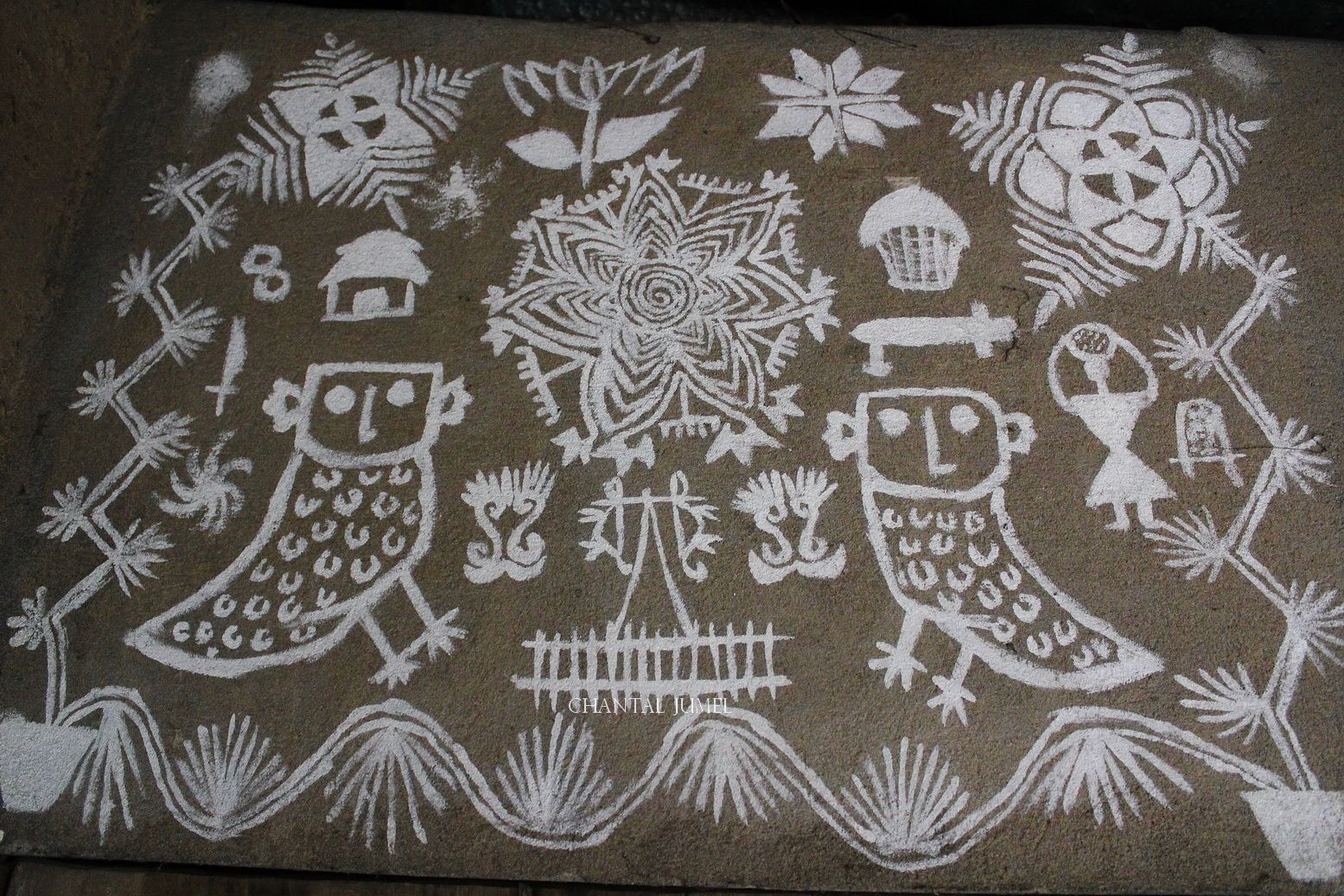
Sumitra, draped in a red and orange sari, reappears, and approaches the large alpona with a tray of flowers which she places on a mat of unhusked rice. Sitting cross-legged, she opens the ceremony of worship of the goddess with the customary offerings and the ritual ends with prayers and salutations.
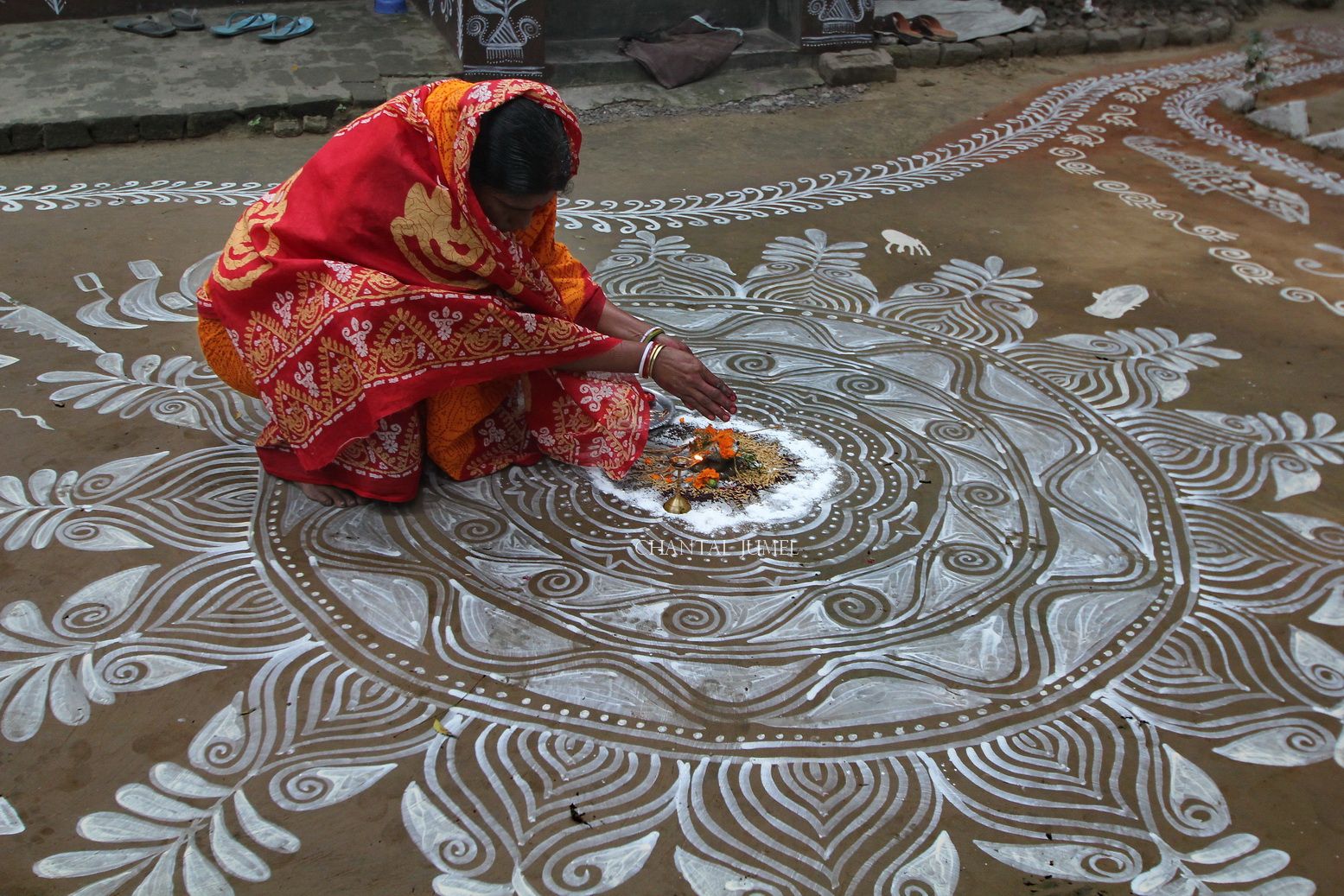
Later in the morning, over a cup of tea, Rabi Biswas recounts his passion for ritual decorations. As a child, under the admiring eye of his grandmother, he painted on the paper bags that a neighbour made for shopkeepers. Later, he collected alpona motifs from village women. This collection delighted his grandmother so much that she decided to introduce him to this art. Since that day, he has transposed this enthusiasm into a book, illustrated with pictograms linked to local traditions.
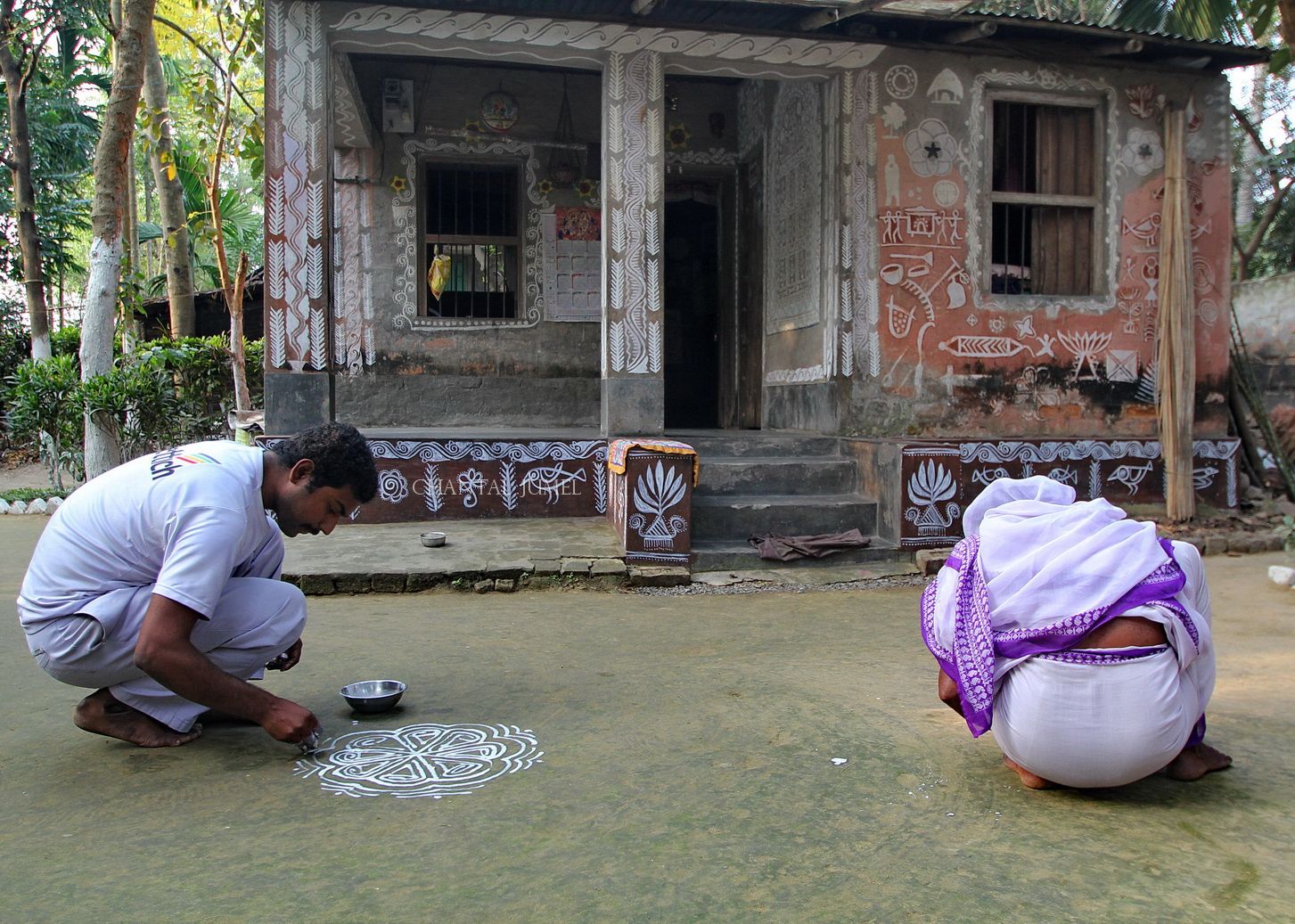
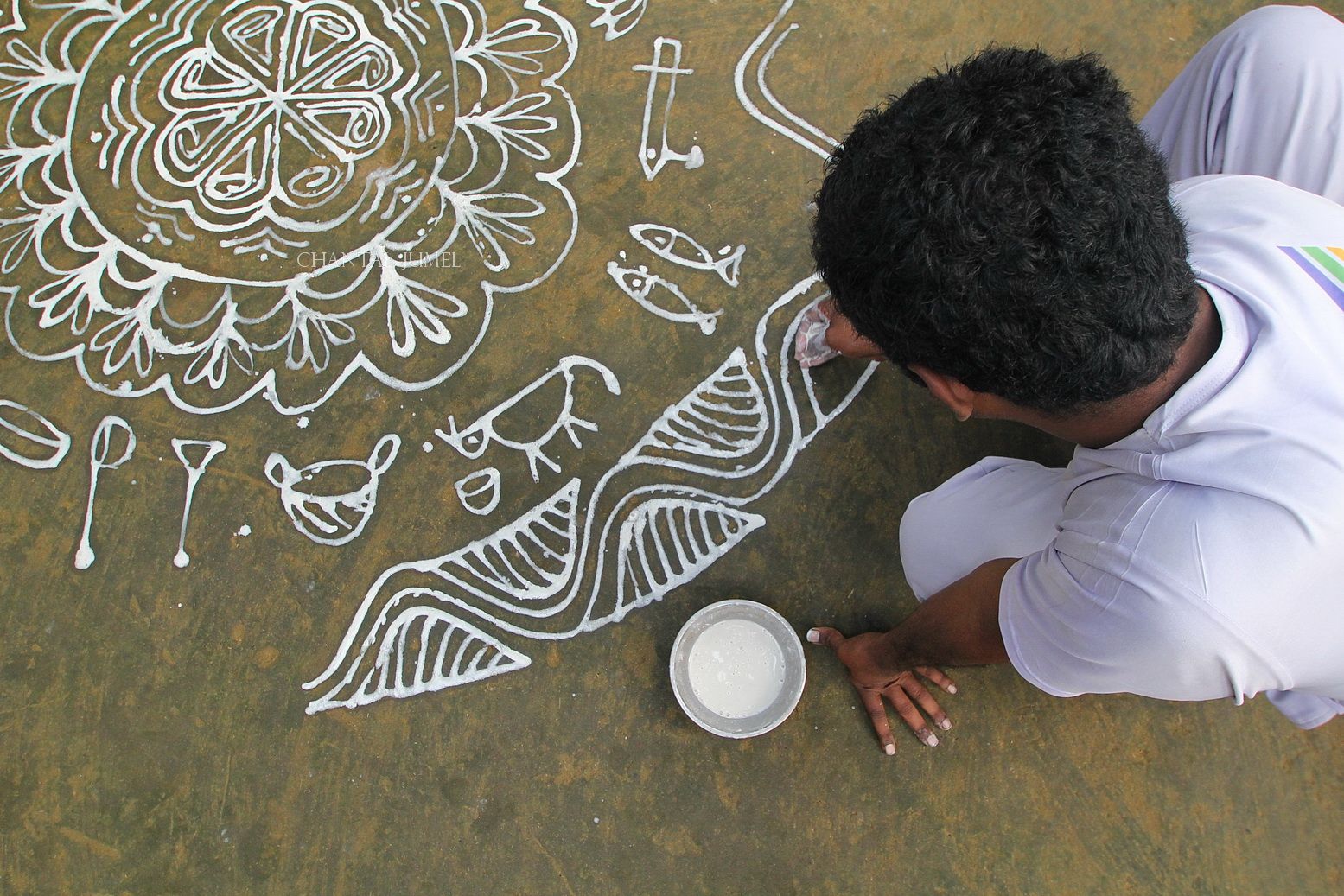
Previous articles:
Alpona: Images and Symbols of Bengali Women
Bengal alpona, "The River by Jean Renoir"— part 1
Bengal alpona, "Meeting with Kolkata" — part 2
